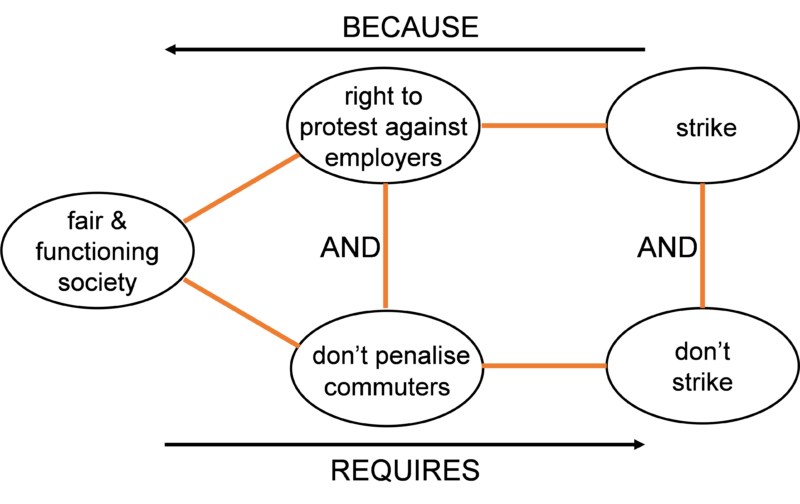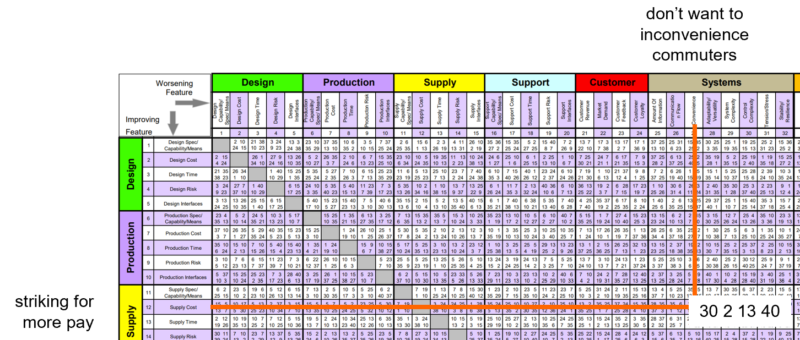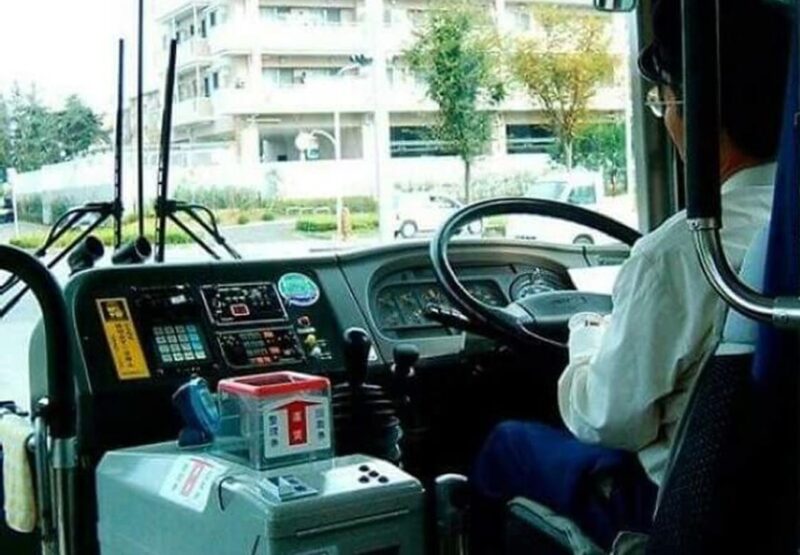The local bus drivers are threatening to go on strike again. In a rural community like ours, when the buses aren’t running, half of the population is literally cut off from many of the basics of life. I’m sure the drivers are very apologetic when they eventually decide to come back to work. In the same way, I’m pretty certain many of the commuters are sympathetic to the drivers’ plight. That’s the way strikes work in the UK. Workers protest, customers sympathise, customers suffer. Surely, there’s a better way? A way that recognises a contradiction – we want strikes and we don’t want strikes:

The problem can be mapped onto the Business Contradiction Matrix as a Supply Cost versus (in)Convenience conflict. Here’s what the Matrix has to say about how others have successful transcended such problems:

A lovely example of a joint Principle 2, Taking Out and Principle 13, The Other Way Around, solution to the problem can be found in Japan. Drivers continue to drive their usual routes but refuse to take payment from the commuters. Commuters get to work on time, and the bus company has a greater incentive to settle the dispute because as well as the lost revenue, they’re also having to pay for fuel. One suspects that both bus company and drivers continue to earn the respect and sympathy of the commuters.

Simple when you know how.
